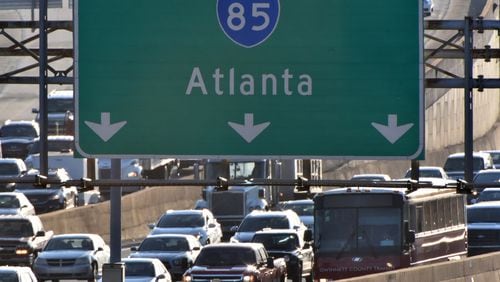Commuting in Atlanta remains a test of both will and patience. That holds true even in summer, which traditionally sees the departure from our roads of both big yellow school buses and many commuters who motor off to vacation destinations.
Both traffic heat maps and automobile taillights still glow red for too long each day, bearing witness to the congestion that’s a hallmark of this growing region.
Yes, projects are underway that will ultimately bring some relief to commutes in metro Atlanta. And the work being done is significant — the Georgia Department of Transportation is spending an additional $900 million annually on road improvements fueled by an historic increase in fuel and other taxes in 2015. Much of that spending will be in this region, which makes sense given that we’re the epicenter of mobility slowdowns that ripple out across Georgia.
>> Another view: Atlanta can't afford to get new transit wrong
There’s more too. A 120-mile network of highway toll lanes is planned for metro Atlanta. Stretches are already open on I-85 and I-75. The next big segment is slated to open this summer. It’s called the Northwest Corridor Express Lanes, extending along I-75 and I-575 north of I-285.
On the transit side of mobility, progress is being made as well. Atlanta voters passed a sales tax in 2016 that’s expected to yield about $2.5 billion over time. Clayton County has benefited from joining MARTA and work’s underway to make further transit additions there as well.
These notable projects will likewise help reduce congestion, but we’d suggest that they won’t be enough. A report released last week, “Modernizing Georgia’s Transportation System,” praises recent work but wisely notes that more is needed. “Achieving the state’s goals for a modern, well-maintained and safe transportation system will require staying the course with Georgia’s current transportation program and achieving additional increases in transportation investment.” We agree.
>> Another view: MARTA expansion benefits communities
The Gold Dome took a big step this year toward enabling the next-generation of mobility improvement with its passage of
HB930 that provides a framework for expanding transit beyond current borders, if counties are willing.
We’d urge current holdouts to take note of the economic development that’s occurring along MARTA lines and also the plainspoken insistence of business prospects like Amazon that relocation sites be alongside robust transit systems. Such guidance from private-sector job creators should not be ignored by counties, cities and regions that want to prosper in the future.
About the Author







